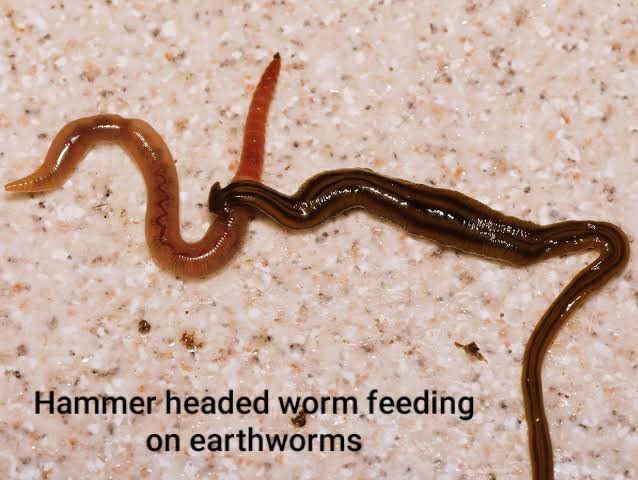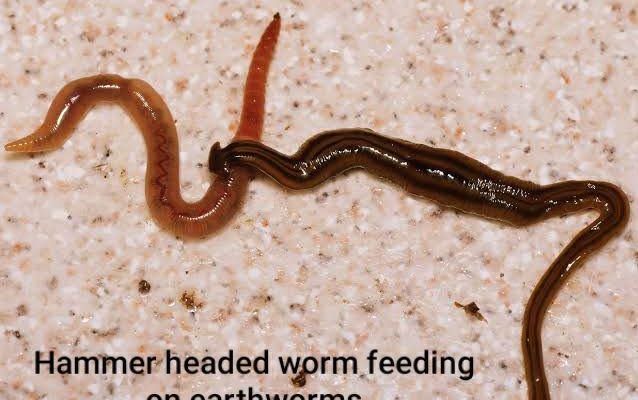
Hammerhead worms, scientifically known as *Bipalium*, are flat, elongated creatures that can grow up to 12 inches long. They sport a distinctive hammer-shaped head, hence the name. Surprisingly, they are not true worms but a type of flatworm. These invaders are mostly found in the tropical and subtropical regions, but they are spreading due to global trade and climate changes. And while they may look intriguing, their presence can upset the delicate balance of soil ecosystems, particularly by preying on earthworms. So, what’s the story here? Let me explain.
What Are Hammerhead Worms?
Hammerhead worms belong to a class called Turbellaria, which includes various flatworms. You might be surprised to learn that not all flatworms are harmful. However, hammerhead worms are notorious for their predatory nature. They have a slimy, flat body that allows them to glide effortlessly through soil and leaf litter. These guys are not picky eaters—they primarily hunt and consume earthworms and other soft-bodied invertebrates.
What sets them apart is their fascinating hunting method. They secrete a mucus that immobilizes their prey, followed by a more gruesome fate: these worms eat their victims whole! Imagine a tiny monster lurking in the soil, ready to devour unsuspecting earthworms. It’s a harsh reality for our garden’s helpful helpers.
Why Earthworms Matter
Earthworms play a vital role in soil health. Think of them as nature’s little gardeners. They break down organic matter and improve soil structure, which helps plants thrive. More importantly, they aerate the soil, allowing water and nutrients to reach the roots of plants effectively.
When hammerhead worms invade, they disrupt these essential processes. An earthworm population decline can lead to poorer soil quality, affecting everything from crop yields to the health of surrounding ecosystems. You might be wondering, “What happens if they disappear altogether?” A significant drop in earthworms could lead to soil erosion and a decline in the nutrient quality of the soil, causing a ripple effect throughout the food chain.
How Do Hammerhead Worms Impact Earthworm Populations?
The relationship between hammerhead worms and earthworms is predatory. Research shows that as hammerhead worm populations increase, earthworm numbers tend to plummet. These predators not only consume earthworms but also outcompete them for food sources, further exacerbating the issue.
In a balanced ecosystem, earthworm populations thrive alongside their surroundings. When hammerhead worms invade, they tip the scales. For instance, in areas where these invasive flatworms are abundant, gardeners and farmers have reported noticeable drops in earthworm sightings. It’s like a sudden blackout in an otherwise lively party—everything becomes quieter and less vibrant.
The Spread of Hammerhead Worms
You might be curious about how these hammerhead worms got to your backyard in the first place. Their spread often ties back to human activity. Whether it’s through the soil in potted plants, contaminated mulch, or even compost, these worms hitch a ride into new territories.
Climate change is another factor. Warmer temperatures can expand their habitat range, allowing them to thrive in areas they previously couldn’t. As these invasive species spread, they can disrupt local ecosystems that had been perfectly balanced for years. It’s something like an unexpected roommate moving in and rearranging your entire living space—chaos ensues!
How to Identify Hammerhead Worms
If you’re worried about hammerhead worms invading your garden, knowing how to identify them can be a game-changer. These worms have a distinct appearance. They are usually dark brown or black, with lighter stripes along their bodies. Their flattened form and hammer-shaped head make them stand out.
If you think you’ve spotted one, it’s crucial to act quickly. In a garden setting, a hammerhead worm can wreak havoc, so monitoring your soil and plant beds for these intruders is essential. When lifting mulch or checking soil, look out for these tell-tale signs. If you see one, it’s time to take action.
Managing Hammerhead Worm Populations
If you find yourself facing a hammerhead worm issue, don’t panic. There are several management strategies you can use to control their population. First, it’s important to maintain healthy soil conditions. A thriving ecosystem can withstand some predation. Here are a few tips to help manage their spread:
- Avoid overwatering: Excess moisture attracts hammerhead worms, so keep your soil just right.
- Use organic mulch: Natural mulches can create conditions unfavorable for hammerhead worms while providing a habitat for earthworms.
- Handpick them: If you spot a hammerhead worm, you can collect it and dispose of it away from your garden.
- Encourage natural predators: Birds and certain insects can help keep their numbers in check.
By taking a proactive approach, you can help protect your earthworm population and maintain the health of your soil.
The Bigger Picture: Ecosystem Balance
Understanding the relationship between hammerhead worms and earthworms sheds light on the larger picture of ecosystem balance. Every species, even the ones we perceive as harmful, plays a role in the tapestry of nature. It’s all about balance. Sometimes, though, invasive species like hammerhead worms can upset that balance, leading to unexpected consequences.
By monitoring and managing these populations, we can work toward restoring equilibrium in our gardens and local environments. Protecting earthworms is essential not just for soil health but for overall biodiversity. When we look after our ecosystems, we create a thriving environment for all species, including ourselves.
In conclusion, while hammerhead worms may look fascinating, their impact on earthworm populations—and consequently, our soil health—cannot be ignored. By understanding their behaviors and implementing management strategies, we can protect our gardens and the valuable earthworms that play such a crucial role. Remember, every action counts when it comes to maintaining the delicate balance of nature.

